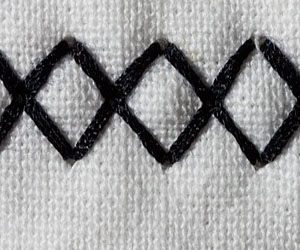


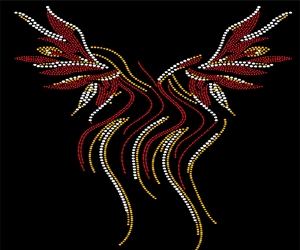
Embroidery, an age-old art form, has long been revered for its intricate and captivating designs. As a testament to human creativity and precision, embroidery designs have adorned fabrics, garments, and textiles across cultures and centuries. Let's delve into the enchanting world of embroidery designs, where threads weave stories, patterns, and beauty.
The Craft Of Embroidery Designs: Embroidery designs encompass a myriad of patterns, motifs, and compositions that transform plain fabric into exquisite works of art. These designs are typically created through the strategic placement of stitches, resulting in an array of textures, colors, and visual appeal. They are often characterized by their ornate detailing and precise execution.
Traditional And Timeless Patterns: Many embroidery designs are rooted in tradition, passed down through generations and reflecting cultural heritage. These timeless motifs often depict flowers, animals, geometric shapes, and symbols of cultural significance. In various regions around the world, unique embroidery designs are used to tell stories, celebrate rituals, and preserve historical narratives.
Floral Designs: Flowers are a prevalent theme in embroidery, symbolizing beauty, growth, and life. From delicate daisies to elaborate roses, floral designs are celebrated for their elegance and versatility.
Geometric Patterns: Geometric shapes and repetitive patterns are a staple in many traditional embroidery designs. These symmetrical arrangements create a sense of order and balance.
Animal Motifs: Animals, both domestic and wild, are often featured in embroidery designs. They can represent local fauna, mythological creatures, or personal totems, adding an element of storytelling to the art.
Religious And Symbolic Designs: Embroidery often incorporates religious symbols, such as crosses or mandalas, or other motifs that hold cultural or spiritual significance.
Contemporary Innovations: In the modern era, embroidery designs have evolved to embrace contemporary aesthetics and innovations. Artists and designers experiment with unconventional materials, techniques, and themes, pushing the boundaries of traditional embroidery. This includes abstract designs, pop culture references, and even political statements, showcasing the adaptability of the craft.
Designing With Precision: Embroidery designs require careful planning and execution. Artists or embroiderers sketch the design on the fabric and choose the appropriate threads, colors, and stitch types to bring their vision to life. The precision and patience involved are integral to the art form.
Machine Embroidery: In addition to hand embroidery, machine embroidery has gained popularity. Computerized machines allow for intricate and precise embroidery designs on a variety of materials, from clothing to home decor items.
Personalization And Customization: One of the most alluring aspects of embroidery is its capacity for personalization. Custom embroidery designs allow individuals to add a unique touch to their garments, accessories, and home decor. Monograms, names, and personalized messages are common elements in this category.
Embroidery designs are an enduring testament to human artistry and craftsmanship. Whether drawing inspiration from centuries-old traditions or forging ahead with contemporary innovations, these designs infuse fabrics and textiles with stories, sentiments, and beauty. With each meticulously placed stitch, embroidery designs continue to captivate the imagination, demonstrating the enduring allure of this ancient craft. As you explore the world of embroidery, remember that every design is an invitation to express your creativity, tell your story, and contribute to the rich tapestry of this timeless art form.
Relaxation Through Candles
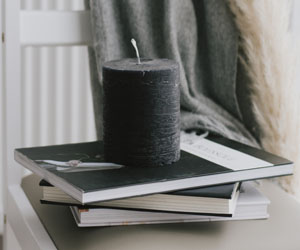 Aromatherapy And Relaxation
Aromatherapy And Relaxation
In addition to their enchanting light, candles can be enhanced with soothing fragrances that promote relaxation. Aromatherapy candles are infused with essential oils that can evoke a variety of emotions and sensations. For instance, lavender is known for its calming and stress-reducing properties, while citrus scents like lemon and orange can boost energy and elevate mood.
Incorporating Candles Into Your Relaxation Routine
Bath Time Bliss: A warm bath can be made even more indulgent with the addition of scented candles. The soft lighting and aromatic scents can transform your bathroom into a personal sanctuary, creating an oasis of relaxation.
Meditation And Mindfulness: Candles are often used as focal points during meditation and mindfulness exercises. Gazing at the flame can help clear your mind and bring about a sense of inner peace and tranquility.
Dinner By Candlelight: Set the stage for relaxation by enjoying a quiet, candlelit dinner. Whether alone or with a loved one, this simple act can turn an ordinary meal into a serene, enjoyable experience.
Bedroom Retreat: Make your bedroom a haven of relaxation by placing scented candles on your bedside table. The soothing scent and soft light can help you unwind and prepare for a restful night's sleep.
Outdoor Escapes: Take your relaxation outdoors by lighting candles on your patio or in your garden. The combination of natural surroundings and candlelight can create a tranquil atmosphere that fosters relaxation.
Yoga And Stretching: Use candles as an integral part of your yoga or stretching routine. The combination of calming scents and gentle lighting can enhance your practice and help you achieve deeper relaxation.
Needle And Thread
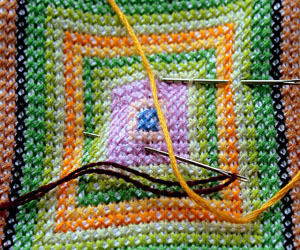 The Thread's Transformative Power: Thread, on the other hand, is a slender strand of material that comes in numerous forms, including cotton, silk, wool, and synthetic fibers. Its primary function is to connect, bind, and adorn. When combined with the needle, thread takes on the role of an artist's brush, creating intricate designs, securing seams, and adding decorative elements to fabrics. The choice of thread can dramatically impact the final outcome, from the sheen of silk to the durability of polyester.
The Thread's Transformative Power: Thread, on the other hand, is a slender strand of material that comes in numerous forms, including cotton, silk, wool, and synthetic fibers. Its primary function is to connect, bind, and adorn. When combined with the needle, thread takes on the role of an artist's brush, creating intricate designs, securing seams, and adding decorative elements to fabrics. The choice of thread can dramatically impact the final outcome, from the sheen of silk to the durability of polyester.
Sewing And Fabric Mending: At its core, the needle and thread serve the practical purpose of sewing and mending fabric. From fixing a torn hem to attaching buttons, these tools are essential for extending the lifespan of clothing and textiles. This ability to repair and restore not only saves money but also contributes to sustainable and eco-friendly practices by reducing waste.
Embroidery And Artistry: One of the most celebrated applications of the needle and thread is in the realm of embroidery.
Finding Serenity In Creativity
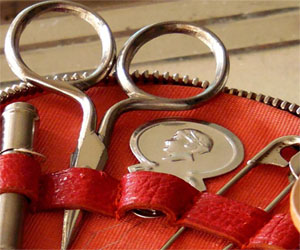 One of the most immediate benefits of crafting for inner peace is stress reduction. Engaging in a creative project allows you to temporarily escape from the whirlwind of everyday life. As you immerse yourself in the craft, your focus shifts away from daily worries, and you experience a calming sense of flow and mindfulness. This mental break can significantly lower stress levels and promote relaxation, which, in turn, leads to a greater sense of well-being.
One of the most immediate benefits of crafting for inner peace is stress reduction. Engaging in a creative project allows you to temporarily escape from the whirlwind of everyday life. As you immerse yourself in the craft, your focus shifts away from daily worries, and you experience a calming sense of flow and mindfulness. This mental break can significantly lower stress levels and promote relaxation, which, in turn, leads to a greater sense of well-being.
Crafting is also a practice of mindfulness. When you're deeply absorbed in a creative project, you enter a meditative state where you lose track of time and are entirely present in the moment. This quality of focus and presence can be profoundly calming and is akin to the practice of mindfulness meditation, which is known to reduce anxiety and improve mental health.
Moreover, crafting for inner peace enhances your sense of accomplishment. Watching your project take shape and witnessing your creative vision come to life is incredibly rewarding. This feeling of achievement can boost your self-esteem, instill a sense of pride, and cultivate an inner sense of worth and purpose.
The sense of serenity and peace that crafting brings is deeply rooted in the tactile nature of the activity. Engaging your senses - touching, feeling, and manipulating materials - is a grounding experience. Whether you're sculpting with clay, stitching fabrics, or painting with brushes, the tactile aspect of crafting can connect you with your surroundings and enhance your appreciation for the present moment.
Crafting can also be a social endeavor, allowing you to bond with others who share your interests. Joining crafting communities or participating in group projects can provide a sense of connection and camaraderie. This social interaction further enhances the sense of inner peace by fostering a supportive network and building meaningful relationships.

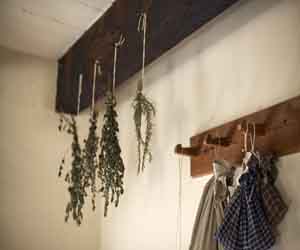

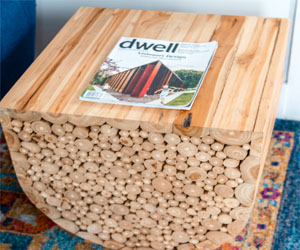
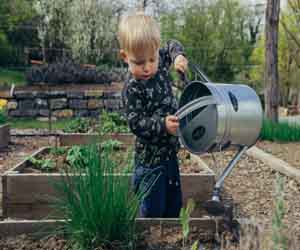
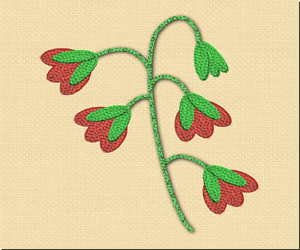
Crafting Beauty From The Ordinary
 Melding Form And Function: Woodworking blends form and function seamlessly. It's not just about creating a beautiful object; it's about making something that is also practical and useful. Furniture, for instance, should be comfortable and functional, while also serving as a stunning piece of decor. Woodworkers carefully consider the design, shape, and functionality of their creations, ensuring they harmonize with the artistic vision.
Melding Form And Function: Woodworking blends form and function seamlessly. It's not just about creating a beautiful object; it's about making something that is also practical and useful. Furniture, for instance, should be comfortable and functional, while also serving as a stunning piece of decor. Woodworkers carefully consider the design, shape, and functionality of their creations, ensuring they harmonize with the artistic vision.
Attention To Detail: One of the hallmarks of transforming lumber into art is the unwavering attention to detail. Woodworkers invest time and precision in every aspect of the project. From selecting the right joinery techniques to meticulously sanding and finishing, no detail is too small to be overlooked. This dedication results in a level of craftsmanship that elevates a simple piece of lumber into a masterpiece.
Creativity Unleashed: Woodworking is not confined by traditional boundaries. It encourages innovation and creativity. A piece of lumber can become a unique sculpture, an intricately designed carving, or a functional object of beauty. Woodworkers draw inspiration from a myriad of sources, and their creativity knows no bounds. The result is a diverse world of wooden art, where imagination is the only limit.
Respecting The Grain: The grain of the wood is the artist's guide, and it's essential to respect it. Woodworkers work with the grain, allowing it to dictate the direction of the project. This harmonious collaboration between artist and material ensures that the final creation is in harmony with nature. The grain becomes an integral part of the art, enhancing its character and allure.
A Labor Of Love: Transforming lumber into art is not merely a job; it's a labor of love. Woodworkers pour their hearts and souls into their projects, investing time, effort, and dedication. Each piece of wood is carefully selected, each cut is deliberate, and each finishing touch is imbued with passion.
The Artistry In Every Stitch
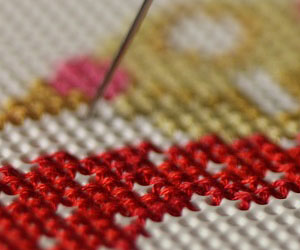 Quilting: Quilting is a technique that marries practicality and artistry. Quilts are made by stitching layers of fabric together, often with intricate patterns. Traditional quilt designs tell stories and are passed down through generations. Quilting stitches can be simple or highly detailed, adding depth and warmth to these cherished heirlooms.
Quilting: Quilting is a technique that marries practicality and artistry. Quilts are made by stitching layers of fabric together, often with intricate patterns. Traditional quilt designs tell stories and are passed down through generations. Quilting stitches can be simple or highly detailed, adding depth and warmth to these cherished heirlooms.
Cross-Stitch: Cross-stitch is known for its precise, grid-based patterns created by "X" stitches. It is a popular choice for decorative items like samplers and personalized gifts. The process is meditative, requiring attention to detail and precision in every stitch.
Appliqué: Appliqué is the art of attaching smaller pieces of fabric onto a larger base to create images, patterns, or designs. This technique can be found in quilting, clothing, and decorative textiles. Appliqué often involves intricate stitching to secure the fabric pieces and add embellishments.
Thread Painting: Thread painting is a technique that mimics the strokes of a painter's brush with colored threads. Artists use varying thread densities and colors to create detailed images on fabric. The result is a stunning visual masterpiece.
Modern Innovation: Threadwork techniques have also embraced modern technology. Computerized embroidery machines allow for intricate and repetitive designs with precision and speed. Additionally, contemporary artists often combine traditional techniques with digital art, creating a fusion of the old and new.
Cultural Significance: Many threadwork techniques carry cultural and historical significance. The choice of colors, patterns, and motifs can reflect the heritage and storytelling of a particular community. These crafts also serve as a way to preserve and pass down traditions through the generations.